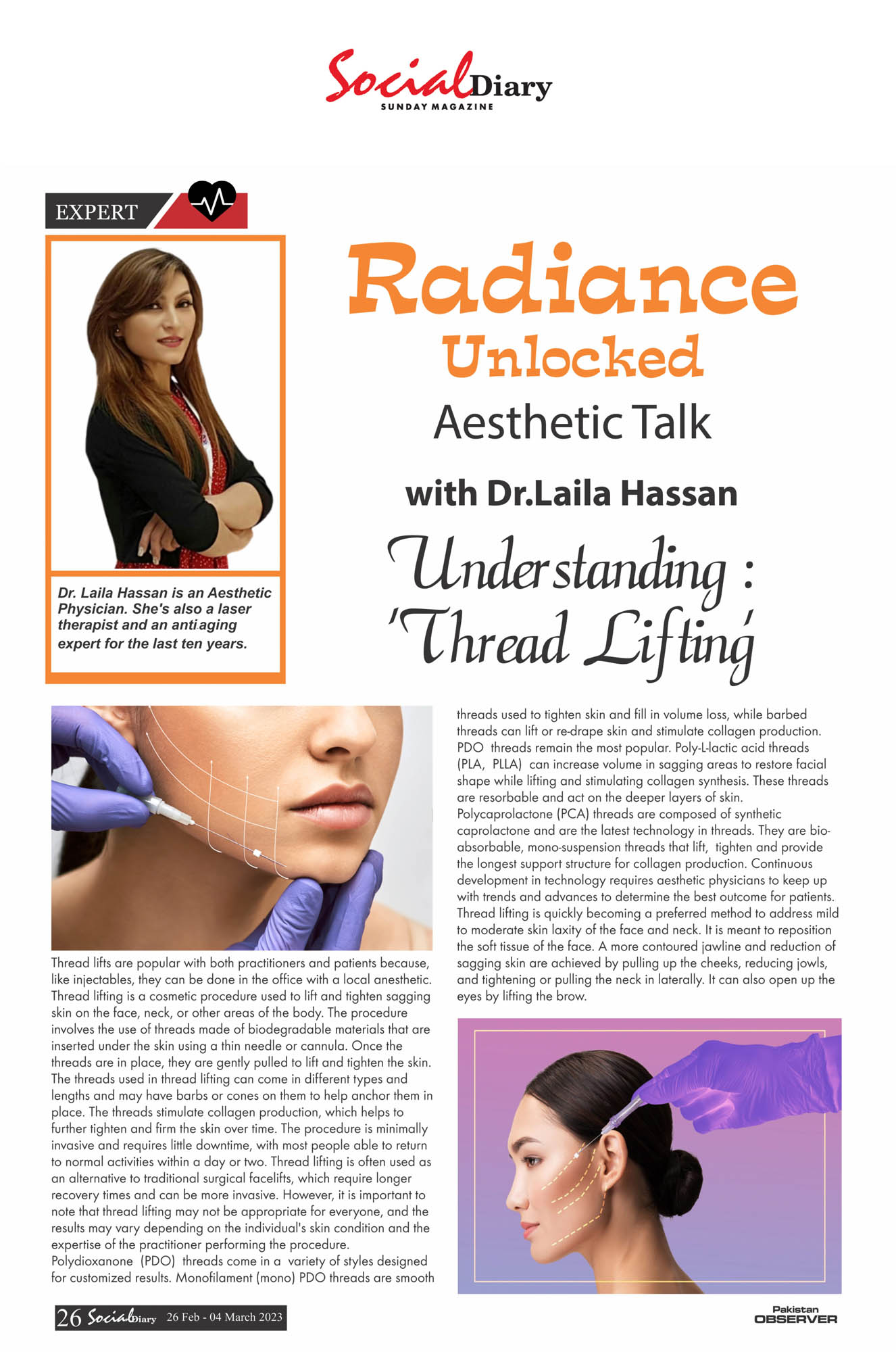Dr. Laila Hassan is an Aesthetic Physician. She’s also a laser therapist and an anti‐aging expert for the last ten years.
Thread lifts are popular with both practitioners and patients because, like injectables, they can be done in the office with a local anesthetic. Thread lifting is a cosmetic procedure used to lift and tighten sagging skin on the face, neck, or other areas of the body. The procedure involves the use of threads made of biodegradable materials that are inserted under the skin using a thin needle or cannula. Once the threads are in place, they are gently pulled to lift and tighten the skin.
The threads used in thread lifting can come in different types and lengths and may have barbs or cones on them to help anchor them in place. The threads stimulate collagen production, which helps to further tighten and firm thze skin over time. The procedure is minimally invasive and requires little downtime, with most people able to return to normal activities within a day or two. Thread lifting is often used as an alternative to traditional surgical facelifts, which require longer recovery times and can be more invasive. However, it is important to note that thread lifting may not be appropriate for everyone, and the results may vary depending on the individual’s skin condition and the expertise of the practitioner performing the procedure.

Polydioxanone (PDO) threads come in a variety of styles designed for customized results. Monofilament (mono) PDO threads are smooth threads used to tighten skin and fill in volume loss, while barbed threads can lift or re-drape skin and stimulate collagen production. PDO threads remain the most popular. Poly-L-lactic acid threads (PLA, PLLA) can increase volume in sagging areas to restore facial shape while lifting and stimulating collagen synthesis. These threads are resorbable and act on the deeper layers of skin. Polycaprolactone (PCA) threads are composed of synthetic caprolactone and are the latest technology in threads. They are bio-absorbable, mono-suspension threads that lift, tighten and provide the longest support structure for collagen production. Continuous development in technology requires aesthetic physicians to keep up with trends and advances to determine the best outcome for patients. Thread lifting is quickly becoming a preferred method to address mild to moderate skin laxity of the face and neck. It is meant to reposition the soft tissue of the face. A more contoured jawline and reduction of sagging skin are achieved by pulling up the cheeks, reducing jowls, and tightening or pulling the neck in laterally. It can also open up the eyes by lifting the brow.


























